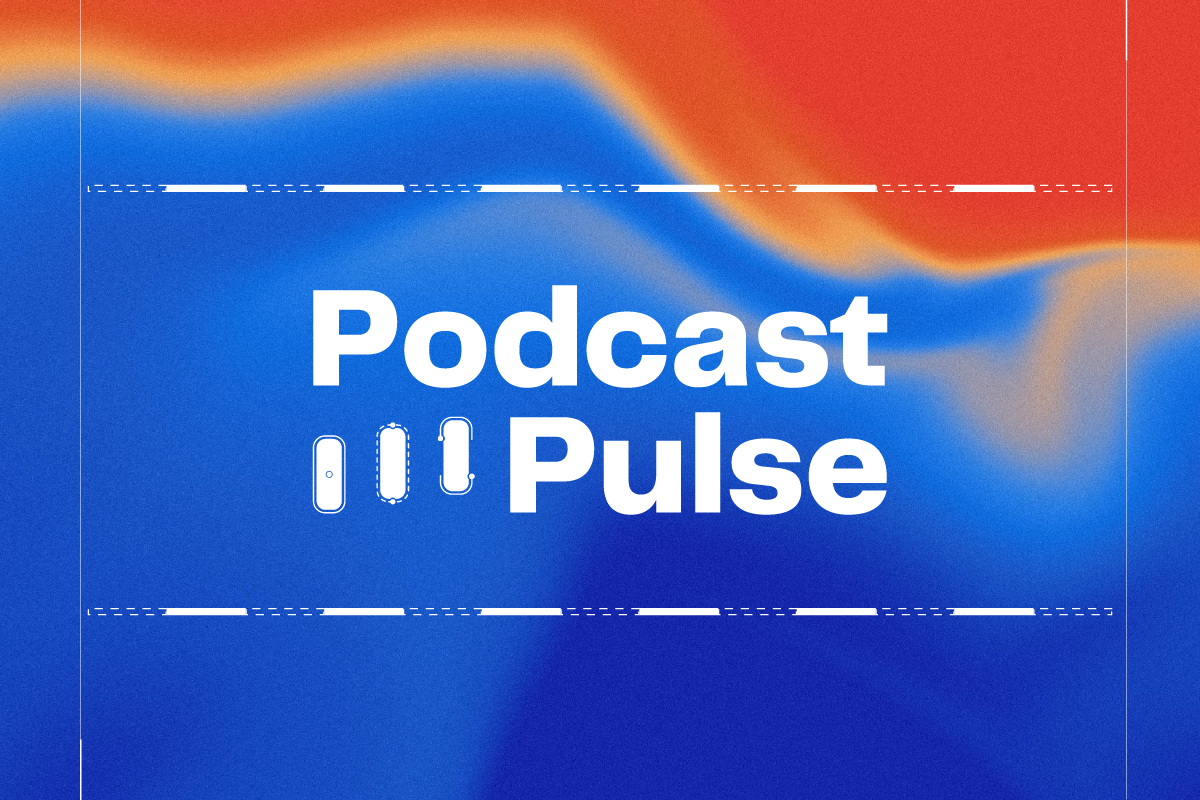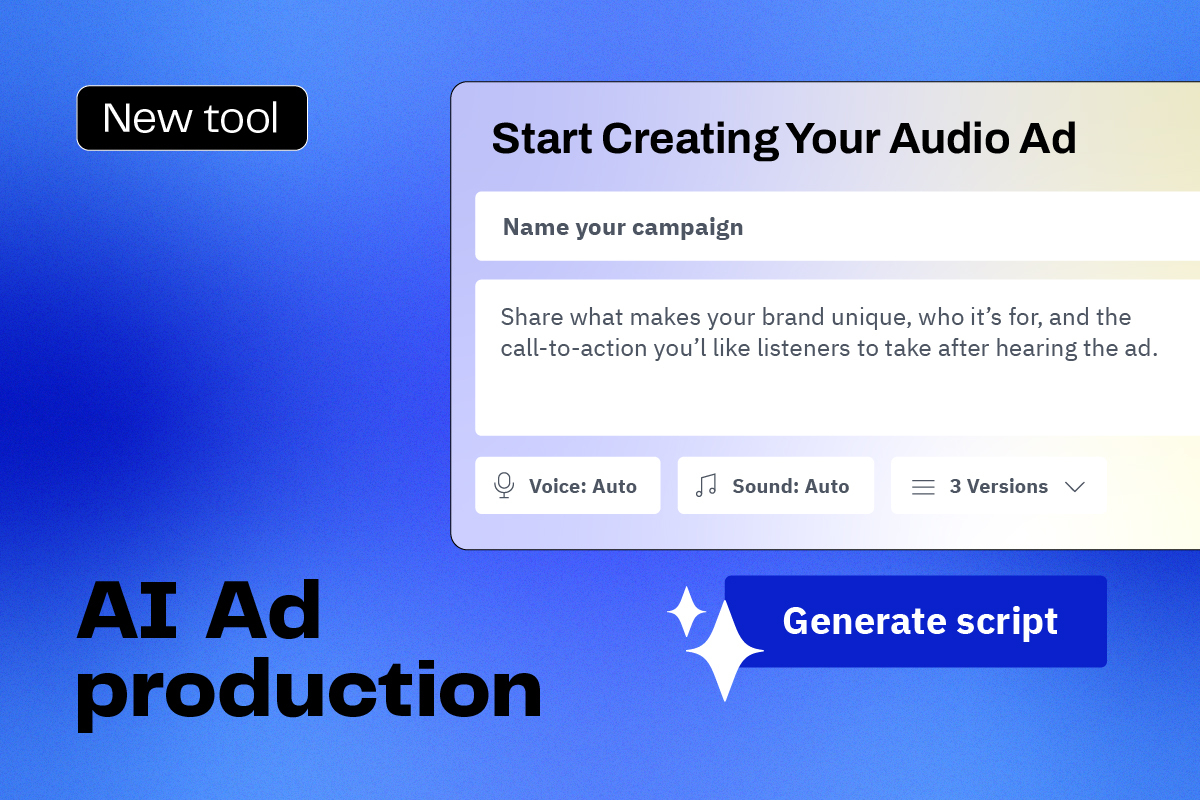Dreams to Dollars - Listeners are Using Podcasts to Help Fall Asleep & Why That’s a Huge Opportunity for Advertisers
.jpg)
When was the last time you had someone read you a bedtime story? I would imagine it’s been quite a while. But what about the last time that you listened to a podcast to help you fall asleep? Probably more recently.
In fact, according to new research from Acast, nearly half (48%) of podcast listeners have used a podcast to help them fall asleep and more than three-quarters have used a podcast for relaxation.
Types of listeners who use podcasts to fall asleep
Our research shows there are two types of listeners who use podcasts to fall asleep, which we have dubbed the Midnight Meditators and Dreamland Distractors. The Midnight Meditators, which make up 36% of listeners who use podcasts to fall asleep, overwhelmingly choose to tune in to podcasts in the Sleep and Relaxation genres. Less often, but still of note, Midnight Meditators also use Fiction as well as Health and Wellness podcasts to fall asleep. Midnight Meditators predominately fall into the 25-44 year old age demographic (78%) and tend to skew more male (55%).
The second type – Dreamland Distractors – make up 64% of those who use podcasts to fall asleep and don’t deviate from their typical day time content. This group often tunes in to Comedy and True Crime to help them drift off. About 20% of this listening group is under the age of 25, which is about twice as many as Midnight Meditators. While many listeners also fall into the Millennial and Gen X categories, Dreamland Distractors span a wider age demographic variety, with many both older and younger than the Midnight Meditators.
Despite these differences, Midnight Meditators and Dreamland Distractors listeners have much more in common when it comes to their bedtime routines than you may expect.
Just like you used to plead for a few more minutes with your favorite bedtime story before turning out the lights, research shows it takes both of these listening types 10 additional minutes to fall asleep compared to those who don’t use podcasts to fall asleep. More specifically, our research found that nearly one-third (32%) of respondents who listen to podcasts to fall asleep take more than 30 minutes to actually fall asleep.
Opportunity for Advertisers
For advertisers, this means that pre-roll and mid-roll placements across Sleep and Relaxation, Fiction, Health and Wellness, as well as Comedy and True Crime genres are most effective in reaching these listeners.
Now, I know what you’re thinking. “No one wants to hear ads while falling asleep!” But, don’t worry, we asked both types of listeners.
Interestingly, all listeners who use podcasts to help fall asleep are far less likely to skip ads than when they are listening during the day. According to our research, nearly half (43%) of listeners are less likely to skip podcast ads while trying to fall asleep.
What’s more is that more than half (54%) of podcast listeners remembered an ad the next day and more than one-third (35%) made a purchase after hearing an ad while falling asleep. These results prove that when consuming podcasts in a dark, relaxing setting listeners are extremely focused on what they are hearing and engaged with the messaging.
Perhaps one of the most interesting findings from our research was that 83% of listeners who use podcasts to fall asleep said they trust podcast hosts – a 9% increase over those who don’t use podcasts to fall asleep. This is especially important to advertisers because it means that host-read sponsorships are more likely to resonate with these audiences.
While both listening types engage similarly with podcast ads when trying to fall asleep, advertisers should approach them differently.
For advertisers investing specifically in Sleep and Relaxation and Fiction podcasts, it’s important to understand that these listeners tend to be males in the 25-44 age range and therefore the ad should be relevant for that audience. Conversely, advertisers eager to reach this audience demographic should consider advertising on these podcast genres.
For advertisers looking to connect with Dreamland Distractors, which is a much broader audience, it’s important to note that such a wide range of listeners uses podcasts in these genres to fall asleep. Therefore, the ads should be more conducive to a relaxed listening experience.
To view this full report, please click here.
When was the last time you had someone read you a bedtime story? I would imagine it’s been quite a while. But what about the last time that you listened to a podcast to help you fall asleep? Probably more recently.
In fact, according to new research from Acast, nearly half (48%) of podcast listeners have used a podcast to help them fall asleep and more than three-quarters have used a podcast for relaxation.
Types of listeners who use podcasts to fall asleep
Our research shows there are two types of listeners who use podcasts to fall asleep, which we have dubbed the Midnight Meditators and Dreamland Distractors. The Midnight Meditators, which make up 36% of listeners who use podcasts to fall asleep, overwhelmingly choose to tune in to podcasts in the Sleep and Relaxation genres. Less often, but still of note, Midnight Meditators also use Fiction as well as Health and Wellness podcasts to fall asleep. Midnight Meditators predominately fall into the 25-44 year old age demographic (78%) and tend to skew more male (55%).
The second type – Dreamland Distractors – make up 64% of those who use podcasts to fall asleep and don’t deviate from their typical day time content. This group often tunes in to Comedy and True Crime to help them drift off. About 20% of this listening group is under the age of 25, which is about twice as many as Midnight Meditators. While many listeners also fall into the Millennial and Gen X categories, Dreamland Distractors span a wider age demographic variety, with many both older and younger than the Midnight Meditators.
Despite these differences, Midnight Meditators and Dreamland Distractors listeners have much more in common when it comes to their bedtime routines than you may expect.
Just like you used to plead for a few more minutes with your favorite bedtime story before turning out the lights, research shows it takes both of these listening types 10 additional minutes to fall asleep compared to those who don’t use podcasts to fall asleep. More specifically, our research found that nearly one-third (32%) of respondents who listen to podcasts to fall asleep take more than 30 minutes to actually fall asleep.
Opportunity for Advertisers
For advertisers, this means that pre-roll and mid-roll placements across Sleep and Relaxation, Fiction, Health and Wellness, as well as Comedy and True Crime genres are most effective in reaching these listeners.
Now, I know what you’re thinking. “No one wants to hear ads while falling asleep!” But, don’t worry, we asked both types of listeners.
Interestingly, all listeners who use podcasts to help fall asleep are far less likely to skip ads than when they are listening during the day. According to our research, nearly half (43%) of listeners are less likely to skip podcast ads while trying to fall asleep.
What’s more is that more than half (54%) of podcast listeners remembered an ad the next day and more than one-third (35%) made a purchase after hearing an ad while falling asleep. These results prove that when consuming podcasts in a dark, relaxing setting listeners are extremely focused on what they are hearing and engaged with the messaging.
Perhaps one of the most interesting findings from our research was that 83% of listeners who use podcasts to fall asleep said they trust podcast hosts – a 9% increase over those who don’t use podcasts to fall asleep. This is especially important to advertisers because it means that host-read sponsorships are more likely to resonate with these audiences.
While both listening types engage similarly with podcast ads when trying to fall asleep, advertisers should approach them differently.
For advertisers investing specifically in Sleep and Relaxation and Fiction podcasts, it’s important to understand that these listeners tend to be males in the 25-44 age range and therefore the ad should be relevant for that audience. Conversely, advertisers eager to reach this audience demographic should consider advertising on these podcast genres.
For advertisers looking to connect with Dreamland Distractors, which is a much broader audience, it’s important to note that such a wide range of listeners uses podcasts in these genres to fall asleep. Therefore, the ads should be more conducive to a relaxed listening experience.
To view this full report, please click here.





